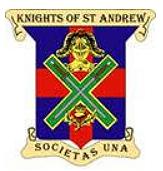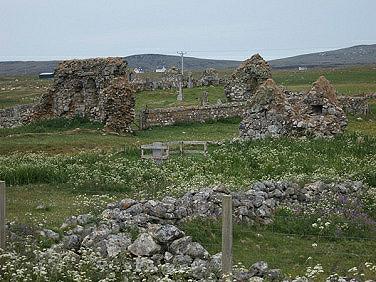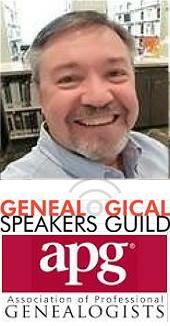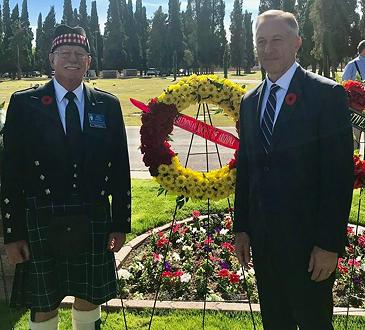Upcoming Events
Christmas at the Castle
Upcoming Events
6 pm – 10 pm
ICC, 1106 N. Central Ave., Phoenix
Join the Irish Cultural Center for their fifth annual “Christmas at the Castle” at the Irish Cultural Center & McClelland Library.
Find Christmas peace under the stars and twinkling lights while you listen to musicians and carolers and enjoy your favorite beverage. Children can play in Santa’s Hall while they enjoy warm cocoa, hear stories, decorate cookies, create a craft, and tell Santa their dearest wish! There is a little something for everyone awaiting at the foot of the magical Irish Castle. Featuring a beautiful selection of live Christmas trees for purchase.
This is not a Caledonian Society event,
but we encourage you to consider attending.
Robert Burns Dinner
 |
The Knights of St. Andrew have invited members and friends of the Caledonian Society of AZ to their annual formal Robert Burns Dinner on Saturday February 1st. The event is scheduled in their new facility at 7726 N. 59th Avenue in Glendale - it's about a mile north of the Glendale Avenue historical district.
Tickets will be available shortly. |
|
President's Letter
David McBee, President
.jpg) Our Saint Andrews Social Evening was cancelled due to low participation in sales prior to the deadline, in order to release the performers and facility from contract. Our Saint Andrews Social Evening was cancelled due to low participation in sales prior to the deadline, in order to release the performers and facility from contract.
Our December event will be the Christmas at the Castle event on December 14th at the Irish Cultural Center from 6 to 10 pm.
The Board is pleased to announce a new leadership team for the Phoenix Scottish Games consisting of Teresa Potts, Kevin Conquest and Darryl Toupkin; with assistance from Sandy Bunch, who is chief of the Canmore, Alberta Games. Teresa will be in further contact with the larger Games committee members.
We have several openings on the Society’s Board including Treasurer and Secretary. If you have past experience in such roles, please consider giving your services to the Society and contact me.
We hope you have a safe and wonderful Christmas and Holiday season with your loved ones and look forward to a great New Year.
SLAINTE, DAVID |
Back to top  |
Highland Clearances - Colonel John Gordon of Cluny
Americans love to discover they have Scottish ancestry – and rightly so. But the harsh truth about why they came here is often lost in the mists of time. Many Scots were brutally forced off the land and packed off in ships to the New World in what was a cruel and barbarous chapter in Scottish history known as the Highland Clearances'
This article published recently in the Scotsman newspaper illustrates the terrible treatment that was meted out.
 Colonel John Gordon of Cluny has been described as one of the most hated men in Scottish history, a brutal landowner who forcibly evicted up to 3,000 tenants to Canada, some handcuffed and thrown on boats at Lochboisdale “like cattle.” Colonel John Gordon of Cluny has been described as one of the most hated men in Scottish history, a brutal landowner who forcibly evicted up to 3,000 tenants to Canada, some handcuffed and thrown on boats at Lochboisdale “like cattle.”
The ruins of the cillage are shown.
From Cluny Castle in Aberdeenshire, he embarked on removing people from their Hebridean homes in 1851 after he saw poor returns on his estate in the Western Isles, which included land on Benbecula, South Uist and Barra.
Described as a hard-headed businessman and a miser so tight he moaned he couldn’t afford to get out of bed, Colonel John Gordon bought the islands from the 18th chief of Clanranald, Reginald George Macdonald, in 1838, who had been forced to sell due to mounting personal debt.
The deal with Gordon signaled the beginning of an even darker, dismal chapter in the livelihood of the tenants on the island estate. Within nine years, the deteriorating condition of the islanders was described “as a scene of wretchedness” by Reverend Norman Macleod as land for farming was reduced for sheep grazing.
“Despicable, nay heart rending,” is how the minister described the scene entering the Cluny estate.
“On the beach the whole population of the country seems to be met, gathering the precious cockles...I never witnessed such countenances, starvation on many faces,” the account, contained in The Jaws of Sheep: 1851 Hebridean Clearances of Gordon of Cluny, said.
Four years later, Gordon, who also owned six plantations in the West Indies and was described as the ‘richest commoner” in Scotland, began forced evictions on all his islands.
A compulsory public meeting in Lochboisdale, South Uist, was held on August 11, 1851, after which tenants were forced on board waiting emigration vessels.
On account of the meeting summed up the chaos, violence and fear of the night: “One stout Highlander, named Angus Johnstone, resisted with such pith that they had to handcuff him before he could be mastered, but in consequence of the priests’ interference his manacles were taken off and (he was) marched between four officers on board the emigrant vessel.”
On Barra, attempts were also made to handcuff the evictees. Some managed to run to the hills where they were hunted down by dogs. Several families were separated. The evictions were described as “loathsome work” by eyewitness Catherine Macphee, of Iochdar, South Uist.
According to The Jaws of Sheep, she said: “I have seen big strong men, champions of the countryside, the stalwarts of the world, being bound on Loch Boisdale quay and cast into the ship as would be done to a batch of horses or cattle, the bailiff and the ground officers and the policemen gathered behind them in pursuit.”
On arrival, Gordon’s former tenants claimed that promises of work - and even land, in some cases - were non-existent. A newspaper cutting from the Dundas Warder, printed in Hamilton, Ontario, October 2, 1851, illustrates concern over the condition of the new Highland arrivals.
“We have been pained beyond measure for some time past, to witness on our streets so many unfortunate Highland emigrants, apparently destitute of any means of subsistence and many of them sick for other attendant cause.”
Gordon died in 1858 his estate ultimately passing to the wife of his late son, John Gordon of Cluny. Lady Emily Gordon Cathcart. who visited the estate once in 54 years, continued to “encourage” tenants to leave for Canada and stopped releasing land for farming. Some believe her support for emigration was to clear Catholic tenants from her property. Others say it was to boost the value of her stock in Hudson’s Bay Company and the Canadian Pacific Railway.
.jpg)
After her death in 1932, the Estate was managed by her trustees before being sold in 1944 to the London banker, Herman Anton Andreae, before it was taken over by a syndicate of sporting enthusiasts in 1960 with the South Uist Estates Ltd created.
In 2006, a community buy out acquired the entire share capital of the company with Storas Uibis formed by residents.
It now manages 93,000 acres of land with a population of 3,000, including 850 tenant crofters. Part of its income is derived from renewable energy production. It is considered a success story of Scotland’s land reform agenda driven to rebuild rural and island life darkened by people such as John Gordon of Cluny.
As Stewart notes: “The people of the Hebrides will never forget John Gordon of Cluny for his cruelties.” |
|
Scotland's Hidden Gems - World's Oldest Post Office
Iain Lundy
The town of Sanquhar in Dumfriesshire is like many small towns dotted around Scotland. It is old - in this case dating back to the 8th century - and is long past its heyday. But if you look beyond its pretty town center and its castle ruin, you will discover the town can boast something truly remarkable.
.jpg) For if you send a letter or postcard from Sanquhar Post Office you will have sent it from the oldest post office in the world. It is one of those bizarre facts that makes you stop and wonder - why here? Of all the millions of post offices in towns and villages throughout the world, why is the oldest in a quiet picturesque town nestling in Scotland’s Nith Valley? For if you send a letter or postcard from Sanquhar Post Office you will have sent it from the oldest post office in the world. It is one of those bizarre facts that makes you stop and wonder - why here? Of all the millions of post offices in towns and villages throughout the world, why is the oldest in a quiet picturesque town nestling in Scotland’s Nith Valley?
There is no true answer, it wasn’t planned and like so many odd facts and figures, just happened that way. It does, however, owe its existence to a long-gone society, in which the local aristocracy held enormous influence and the strategic location of towns such as Sanquhar was a matter of great importance.
The post office here has been operating continuously since 1712, eight years longer than its closest rival in the Swedish capital Stockholm. The third oldest, in Santiago, Chile, opened a full 60 years after the office in Sanquhar.
At the time the post office started, the Crowns of England and Scotland had not long been united. There was considerable activity in the border areas of both lands and one of the most important and influential families of the day was the Crichton family, who owned Sanquhar Castle.
In 1712 a service known as the Nithsdale cross-post was established with mail-runners on horseback delivering messages among the landed gentry on both sides of the border. It was the earliest form of post and it was confined to the aristocracy.
The Crichtons fell out of favor in the late 18th century and the dominant landowners in the area became the Buccleuch family of Thornhill. By that time, however, a postal service was becoming an established part of life.
.jpg)
When Scotland’s national Bard Robert Burns was alive in the latter part of the 18th century he was great friends with the owner of Sanquhar post office and the fireplace in the living room of the building was constructed from elm trees grown by Burns at his Ellisland Farm, near Dumfries.
Sanquhar post office’s historical importance is recognised by the Royal Mail. The postmaster there is the only one in Britain allowed to stamp a date when a letter is posted, or a card sent. The frank reads “Sanquhar, Dumfriesshire 1712”. |
Research Your Scottish Ancestry
|
|
 Little Known People - the Jews of Scotland Little Known People - the Jews of Scotland
by Robert M. Wilbanks IV, B.A.
Chief Genealogist & Historian, C.S.A.
genealogy@arizonascots.com
A generally little-known people of Scotland are the Scottish Jews. Scotland is one of the few countries in the world with very little recorded history of anti-Semitism. While Jews may have lived in Scotland earlier, possibly as early as the 1200s (after the “Edict of Expulsion of 1290” expelling Jews from England), there is no firm evidence of Jewish settlement in Scotland until the late 1600s. After that, small numbers of Jews came from England, Europe and the Americas – primarily academics, medical students and traders.
The biggest interest for the Jewish attraction to Scotland was to study at the universities where religious tolerance was accepted, unlike the universities throughout much of Europe and the Americas, which had strict religious restrictions. Levi Myers of South Carolina was the first Jew to graduate from the University of Glasgow in 1787.
The first Jewish communities in Scotland began to be established in the 1800s and were primarily Ashkenazi Jews. The first synagogue of Scotland opened in 1816 in Edinburgh. Then Glasgow in 1823, Dundee in 1878 and Aberdeen in 1893. At times there were known Jewish communities in Ayr, Dunfermline, Falkirk, Inverness and several other places. At its peak in the 1930s, the Scottish Jewish community of around 18,000 supported a network of synagogues and religious institutions, as well as social, cultural, educational, political, Zionist and philanthropic activities, in addition to an economic base of Jewish shops and businesses. Even a language form of “Scots-Yiddish” emerged for a short while in the Lowlands of Scotland in the late 1800s and early 1900s.
A wide variety of basic genealogy source material can initially be used by those researching their Scottish Jewish family history. These sources include vital records dating to 1855, census records, military records of Scotland, and more. Additionally, city directories, valuation rolls, passenger ship lists, etc., would be standard Scottish genealogy resources of benefit to Jewish research. Meanwhile, naturalization records for Jews in Scotland are held at the National Archives in Kew, London and are indexed.
Of course, common with genealogy research is the frequent misspellings of the Jewish family names; particularly those with the unique eastern European family names arriving at the Scottish ports. Also, be aware that most histories relating to the Scottish Jews is primarily from an English perspective, thus taking away the distinctive Scottish dimension.
The main source for Scottish Jewish records is the Scottish Jewish Archives Centre at the Garnethill Synagogue in Glasgow. Based in Scotland’s oldest existing synagogue (opened 1879), the centre contains a treasure trove of material, including:
- records and correspondence relating to Jewish organizations, businesses and individuals
- synagogue and circumcision registers
- copies of the records of fifteen of the sixteen Jewish cemeteries in Scotland
- a large collection of photographs; an oral history collection; brochures, annual reports, minute books and membership lists
- back issues of Scottish Jewish magazines and newspapers (such as the Jewish Echo 1928-1992)
The centre’s Historical Database of Scottish Jewry collates and cross-references over seventy lists and sources, with records on over 28,000 Jews who lived in Scotland. This computer database, available only at the centre, is the best starting point for Scottish Jewish research. This link is for more information about their Jewish Family History & Genealogy collection: www.sjac.org.uk/family-history-genealogy
The following are some websites of interest, related to studies, resources and organizations related to Scottish Jewish history:
Here is a four page (PDF document) overview of “The Jewish Experience in Scotland”: www.scojec.org/resources/files/jewish_experience.pdf
The following link is to an overview of a significant demographic study of Scottish Jewry: avotaynuonline.com/2015/04/a-family-tree-of-scottish-jewry-first-stage-complete
This website provides links to resources related to Jewish communities and congregations in Scotland: www.jewishgen.org/jcr-uk/Scotland.htm
Scottish Jewish Cemeteries: www.scottishjewishcemeteries.org
The Jewish Genealogical Society of Great Britain: www.jgsgb.org.uk
A main international website for Jewish genealogy: www.jewishgen.org/new
A website on the Jewish Heritage throughout Europe, this page specifically provides an extensive list of resources and links related to researching Scottish Jewry: jewish-heritage-europe.eu/united-kingdom/scotland
This is another of a series of articles in which I show you the basics of searching for your family history, discussing the use of family records, public records, and online resources nationally and internationally, etc. The previous articles are now available on the Genealogy Section of this website. See “Genealogy” in the menu options at the top of the web page.
|
A Piping Weekend
Len Wood
.jpg) The 13th hosting of A Piping Weekend will be held in Phoenix the first weekend of December. Pipe Major Len Wood gives the background to the now extremely popular Scottish event. The 13th hosting of A Piping Weekend will be held in Phoenix the first weekend of December. Pipe Major Len Wood gives the background to the now extremely popular Scottish event.
December 2, 2006 gave birth to A Piping Weekend. And now on December 7 & 8 our event is 13 years old, officially entering its teenage years.
In the early years, the goal was to foster a better understanding of Piobaireachd (pronounced peeb-rock), the classical music of the Great Highland Bagpipe. The music was developed in the Highlands of Scotland, with the MacCrimmons of Skye the chief exponents of the art. From approximately 1590 to 1860 the MacCrimmons were the hereditary pipers to the MacLeods of Skye and the chief teachers, performers and composers of this great music. The responsibilities were passed from father to son and sometimes from brother to brother.
The MacCrimmons and their peers, the MacArthurs and Campbells taught Piobaireachd through a vocal system called Canntaireachd. This piping language told the student how and when to play each note and the various movements. The system was used for centuries before being written down in long hand, not music, but the actual words. Around 1835-37 Piobaireachd was written on the five-line staff we now use with two extra notes above the staff.
In addition, each piece of music goes through a progression starting with the Ground or Urlar and proceeds through variations on the “Ground” theme. The composer takes theme notes from the Urlar and attaches movements to each of these notes. Each variation gets a little more difficult than the last. A Piobaireachd may run from five to 20 minutes in length, requiring stamina and a well-set bagpipe.
Piobaireachd is complicated and takes a good piper to produce a well-played tune, but it takes an even better player to fully understand and teach this great music. We found a couple of these teachers, first in Iain Macey, a Scottish emigrant living in Michigan and for the last ten years, Bruce Gandy of Halifax, Nova Scotia. Bruce is an accomplished player and teacher having won practically all the world’s major piping awards. We feel very fortunate to have him with us to explain and teach Piobaireachd in Phoenix.
In 2006, we added a solo piping contest on the Sunday following Saturday’s Piobaireachd classes. This year, as in past years this event will be held at the Phoenix Irish Cultural Center, 1106 N. Central Avenue, Phoenix. The solo events start at 9:00 am and run till noon. In the afternoon we are planning a Piping Quartet contest. And as in past years, we will end the day with everyone playing in a large circle, so if you play bring your pipes and play a few tunes with the contestants. Finally, our Chef Jim Johnson will be back at the BBQ grilling the best burgers in town, and the center will provide a bar with the usual assortment of drinks to fit a variety of pallets.
Aspiring Piobaireachd player and or a contestant, go to Azpipingweekend.com for information and applications.
Enjoy hearing bagpipes and want to support piping in Phoenix, come out on Sunday, December 8. We will be happy to see you. |
RAF Cadet Memorial
per City of Mesa History
“During World War II, an airbase was constructed in Mesa for the training of U.S. and British fighter pilots. More than 2,000 pilots were trained at this airfield, Falcon Field, which today serves as a municipal airport. Twenty-three British cadets and one American pilot were killed in air accidents during Falcon Field's four years as a training facility, and these individuals are buried in a special section of the Mesa Cemetery.
Located near the center of the Cemetery, the airmen's grave markers include rank, serial numbers, and the eagle crest of the RAF. A special Memorial service is held annually to commemorate the sacrifice of these individuals. The service is held on the Sunday before the observed Veteran's Day holiday, at 10:45 am. In addition, a monument in memory of all who served at Falcon Field was dedicated in 1991 at Falcon Field Park.”
 Past Pres. Don Finch presented the Society’s wreath at this years’ service on November 10th. Past Pres. Don Finch presented the Society’s wreath at this years’ service on November 10th.
Don is shown with Mesa Mayor John Giles
|
|
COMING EVENTS and Highland Games in Arizona and Nearby
|
|
|
Membership Reminder
Membership dues for 2020 are:
- - $30.00 single and $50.00 Family (at the same address)
It's easy - just jump to the Membership Page for information.
Society Gatherings
Membership gatherings are often held on the second
Thursday of each month, many at the Irish Cultural Center,
1106 N. Central Ave., Phoenix - others around the Valley - usually beginning at
6:30 pm. Please check our website for further details.
|
|
|
|